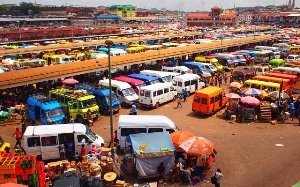A waiver of Value Added Tax (VAT) on big ticket cost items such as drilling and laboratory services will consolidate the contribution of the mining sector to the economy, as well as, cement the country’s prestigious position as Africa’s top gold producer, the Chamber of Mines has said.
In 2019, the mining sector was the second-biggest contributor to government revenue, as its fiscal contribution rose by 70 percent to GH?4.02 billion, from GH?2.36 billion in 2018, according to the 2019 annual Chamber of Mines report.
This notwithstanding, the Chamber believes that incentives are needed to encourage more investments into exploration activities, in order to sustain output going forward and to improve the sector’s role as a major foreign exchange earner.
“The Chamber humbly requests the government to exempt exploration companies from payment of Value Added Tax (VAT) on big ticket cost items such as drilling and laboratory services. This exemption has proven to be a major incentive for attracting exploration into mining countries globally. In taking advantage of the opportunities that mining presents, we must be seen to be creating the enabling environment for both local entrepreneurs and foreign investors while looking beyond the risks associated with exploration,” its President, Eric Asubonteng said.
He spoke during the Chamber’s virtual annual general meeting and said the relevance of exploration in ensuring a pipeline of future viable mining projects could not be over-emphasised.
The need for exploration-based incentives, according to him, has become imperative, given the fact that in the recent years, exploration investment in the country has declined significantly.
As the continent’s leading gold producer, the country only had US$98.6 million out of Africa’s US$615.9 million projected exploration spending for 2019, way below that of its northern border neighbour, Burkina Faso, which was the biggest beneficiary with US$132 million.
This is, according to the Mr. Asubonteng, is alarming for a country to which mining is critical for forex and fiscal revenue generation as well as other value enhancing services. “The disparity runs its own sad commentary for the Ghanaian mining industry. As Africa’s leading producer of gold, Ghana must continue to create the requisite policy and legal prescriptions and platforms to engender mining exploration.”
To him, the ravages of illegal mining or galamsey on lands which could have been properly drilled for more efficient mining later by relatively more competent miners remains not only a disastrous situation but a calls for more investments into exploration too, if the country is to sustain production of precious metals.
As the most critical activity that guarantees sustainable production of mineral and discovery of new mineral resources, the Chamber is therefore of the view that providing incentives for exploration remains vitally important, since it will help supplement production from existing mines or replace output of mines whose economic ore body gets exhausted.
He added: “Essentially, it will be immensely useful to put in place an incentive scheme that will reduce the cost associated with exploration to help attract the required investments into this high-risk business of mineral exploration.”
2019 Gold output
The country’s gold output increased from 2.807 million ounces in 2018 to 2.989 million ounces in 2019, a 6 percent increase from the previous year’s output, the Chamber said.
Gold assayed by the Precious Minerals Marketing Company on behalf of licensed gold exporting companies that represents small-scale production, however, decreased from 1.984 million ounces in 2018 to 1.588 million ounces in 2019.
The 20 percent decrease in the small-scale mining sub-sector led to a decline in total gold output from 4.792 million ounces in 2018 to 4.577 million ounces in 2019. Consequently, the large-scale sector improved on its contribution to national gold production, from 59 percent in 2018 to 65 percent in 2019 whereas the small-scale sector accounted for 35 percent of national gold production in 2019; a decline from 41 percent in 2018.
Meanwhile, the bulk minerals sector – manganese and bauxite – saw 18 percent and 10 percent improvements in output respectively.
“This growth was occasioned by the simultaneous increase in production and price of some minerals, particularly, gold,” added, Mr. Asubonteng.













